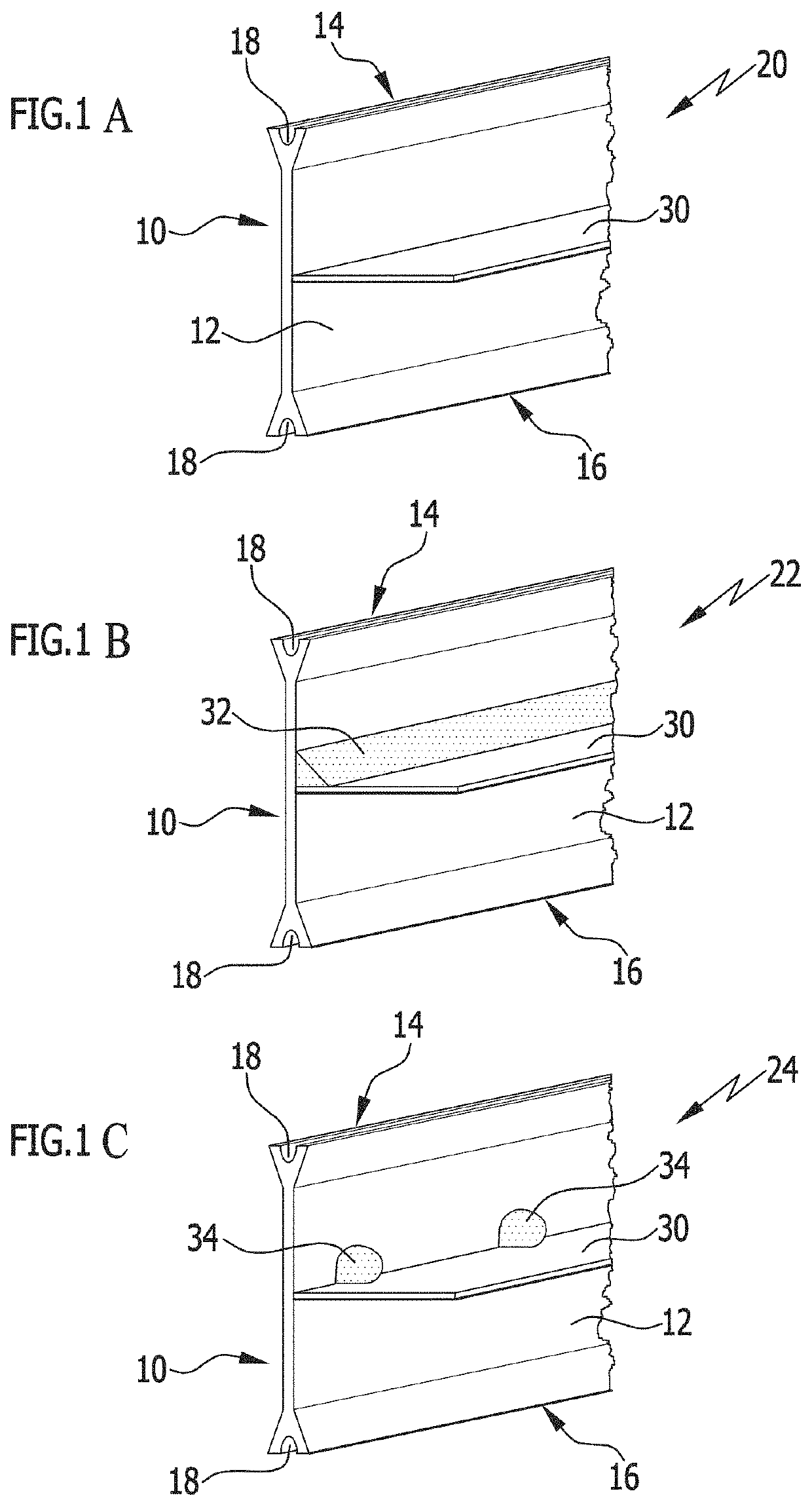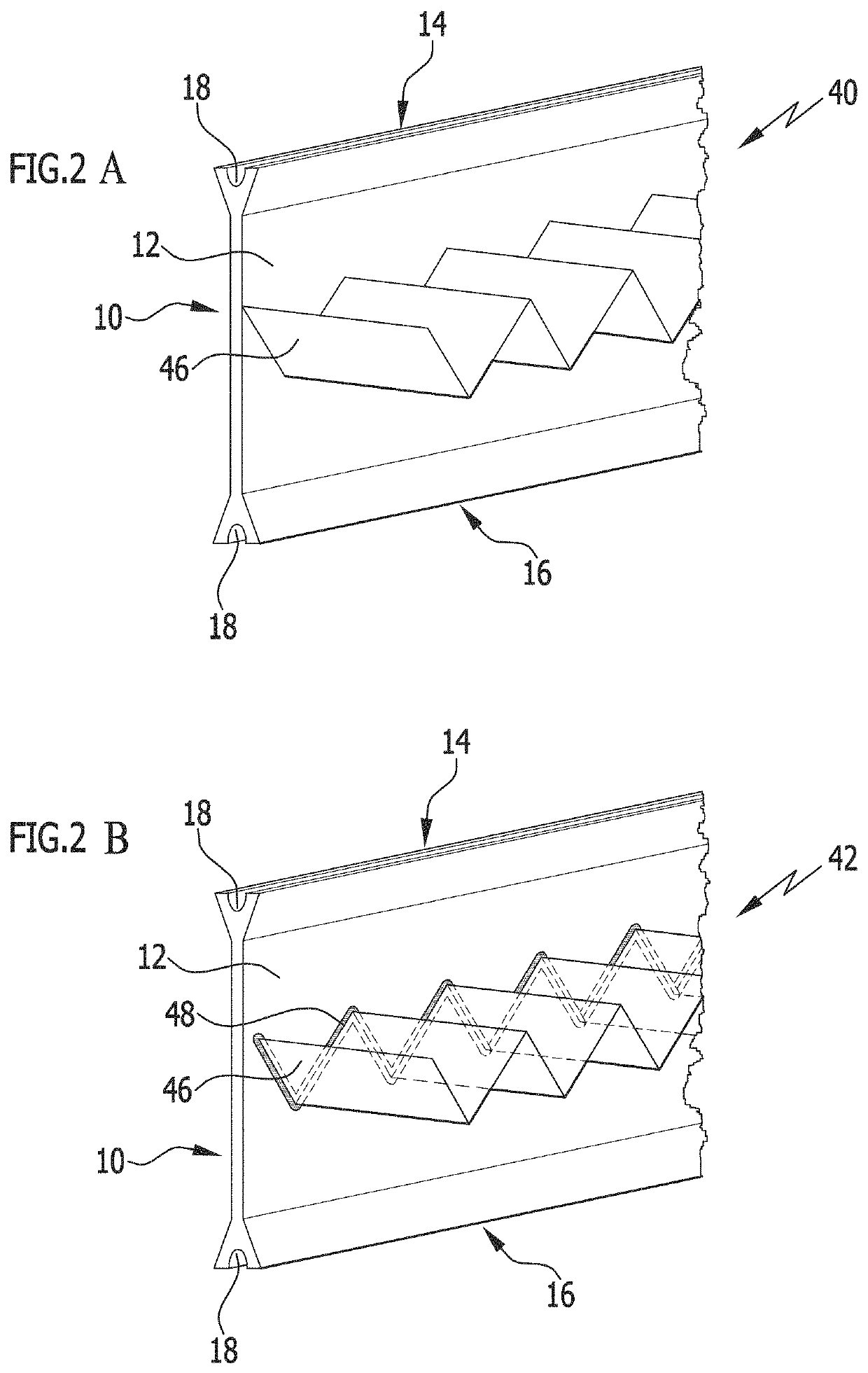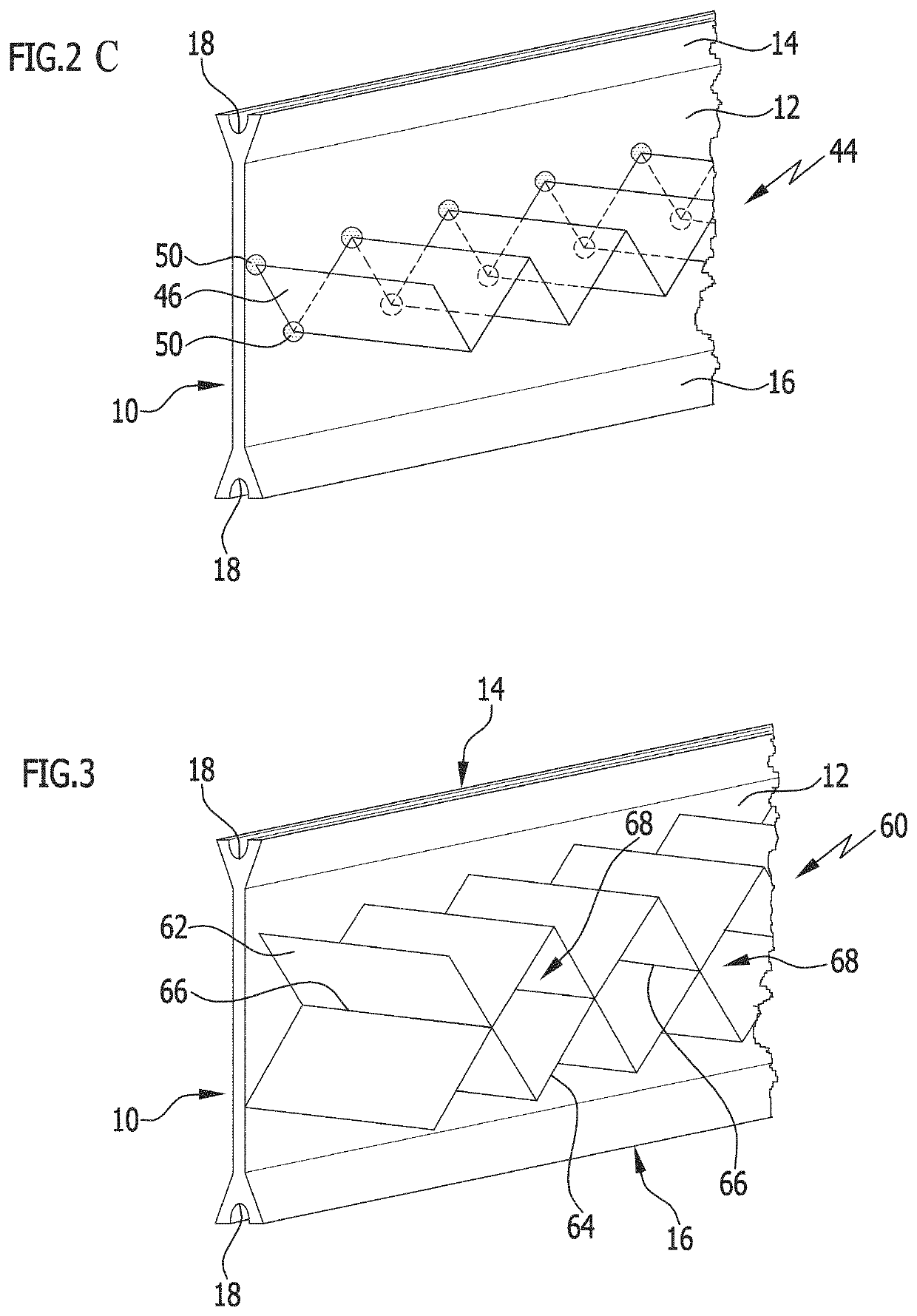Insulating profile, in particular for the production of window, door, and facade elements, and methods for the production thereof
a technology for insulating profiles and facade elements, which is applied in the field of insulating profiles, can solve the problems of high tool cost, lack of flexibility to react to certain desired changes in the adaptation of the composite geometry, and the inability to simply increase the visible width of the metal-plastic composite, etc., and achieves the effects of reducing tool cost, reducing complexity, and increasing quantity
- Summary
- Abstract
- Description
- Claims
- Application Information
AI Technical Summary
Benefits of technology
Problems solved by technology
Method used
Image
Examples
Embodiment Construction
[0125]FIGS. 1A to 1C show a first embodiment of the insulating profiles in accordance with the invention in different variants, which each are based on an insulating bar 10 with a planar profile body 12. Adjoining the profile body 12 are rim sections 14, 16 which are configured as roll-in heads. The rim sections 14, 16 also extend in the longitudinal direction of the insulating profile in accordance with the invention and are formed on the outer rims of the profile body 12 at a distance transverse to the longitudinal direction. The production of such insulating bars 10 from a polymer material with a high degree of accuracy of the cross-sectional geometry and high linearity in one extruding step is economically possible without a great deal of expenditure. The extruding tools required for the process are of little complexity and are also available relatively economically.
[0126]When processing the insulating profile in accordance with the invention in the form of metal-plastic composi...
PUM
| Property | Measurement | Unit |
|---|---|---|
| thickness | aaaaa | aaaaa |
| processing temperature | aaaaa | aaaaa |
| temperature | aaaaa | aaaaa |
Abstract
Description
Claims
Application Information
 Login to View More
Login to View More - R&D
- Intellectual Property
- Life Sciences
- Materials
- Tech Scout
- Unparalleled Data Quality
- Higher Quality Content
- 60% Fewer Hallucinations
Browse by: Latest US Patents, China's latest patents, Technical Efficacy Thesaurus, Application Domain, Technology Topic, Popular Technical Reports.
© 2025 PatSnap. All rights reserved.Legal|Privacy policy|Modern Slavery Act Transparency Statement|Sitemap|About US| Contact US: help@patsnap.com



